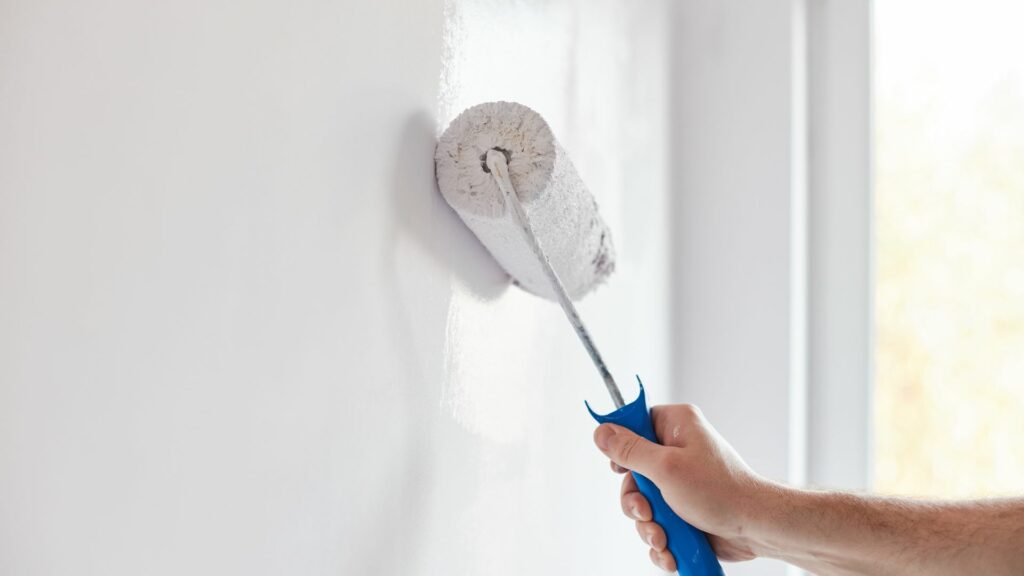Painting the interior walls of your home is one of the simplest ways to transform the look and feel of your living space. Not only does a new coat of paint refresh your decor, but it also provides a layer of protection for your walls. Whether you’re looking to update a single room or your entire home, following the right steps can help you achieve a professional-quality finish.
Getting Ready to Paint
Before you dip your brush into the paint, proper preparation is essential. Start by clearing the room as much as possible. Move furniture to the center of the room and cover it with drop cloths to protect it from paint splashes. Protect your floors with drop cloths or old newspapers.
Your walls need to be clean and smooth before you start painting. Wash them to remove dust, dirt, and grease spots, which can prevent the paint from adhering properly. For walls with old paint, lightly sanding them can help the new paint stick better. If there are any holes or cracks, fill them in and sand the area smooth.
Choosing Your Paint
The type of paint you choose is just as important as the color. Different finishes and formulations are suitable for different rooms. For instance, kitchens and bathrooms benefit from mold-resistant paints due to the high moisture levels, while living areas may look best with a flat or eggshell finish that minimizes reflections.
When it comes to color, think about the mood you want to create. Light colors can make a room feel larger and more airy, while dark colors can add depth and warmth. Take home samples to see how different colors look in the room’s lighting, as colors can change appearance under different light conditions.

Painting Like a Pro
Once your space is prepared and you’ve chosen your paint, it’s time to get down to business. Start by applying painter’s tape along edges and around windows and doors to ensure clean lines. When applying paint, start from the top of the wall and work your way down. Use a roller for the main sections of the wall, moving in a ‘W’ pattern for even coverage. For the edges and corners, use a smaller brush to get a precise finish.
If you’re painting over a darker color or patchy walls, using a primer can be a great way to ensure a consistent finish. Primers help hide previous colors and can reduce the number of top coats needed.
Drying and Second Coats
After the first coat of paint, allow it to dry completely, according to the manufacturer’s instructions. Check if you need a second coat by looking at the color uniformity and coverage once the first coat is dry. A second coat often enhances the richness of the color and ensures even coverage.
Finishing Up
Once the final coat is dry, carefully remove the painter’s tape. Peel the tape off slowly and at an angle to avoid tearing off any fresh paint. Replace the furniture, remove the drop cloths, and enjoy your newly transformed room.
Keeping Your Walls Looking Great
Maintaining your freshly painted walls is straightforward. Keep them clean of dust and gently wash any marks with mild soapy water. For any chips or scratches that appear over time, a small touch-up can make them look as good as new.
Opting for A Professional Calgary House Painter
At 403-PAINTER, your trusted house painter in Calgary, we are committed to bringing your vision to life with precision and style. Whether you’re updating a single room or revitalizing your entire home, our professional team is here to deliver flawless results with minimal disruption to your daily life.
Don’t wait to give your home the makeover it deserves! Contact us today to schedule a consultation and see how we can make your space shine anew. With 403-PAINTER, excellence is just a brushstroke away!
Frequently Asked Questions
What are the essential tools I need for a painting project?
Answer: The essential tools for any painting project include high-quality paint brushes and rollers for application, a putty knife for patching any holes or imperfections in the walls, and a roller cover to ensure a smooth finish. You’ll also need masking tape to protect edges and create clean lines, and plastic sheeting to cover furniture and floors from paint spills.
How do I choose the right paint colors and ensure a smooth finish?
Answer: Choosing the right paint color can dramatically affect the ambiance of a room. Consider the room’s lighting and size when selecting colors. For a smooth finish, prepare your walls carefully by filling in holes and smoothing out bumps with a putty knife and sandpaper. Use high-quality latex paint for its durability and ease of use. Apply the paint evenly with a good quality roller and use brushes for smaller or harder-to-reach areas.
What are some top painting tips to achieve professional-looking results?
Answer: To achieve professional-looking results, start by carefully preparing your painting surfaces and organizing all necessary tools. Use plastic sheeting and masking tape to protect non-painted surfaces. Apply paint in even, long strokes with a roller, and use a paintbrush for detailing work around edges and corners. Between coats, cover your brushes and rollers with plastic to keep them moist. After painting, remove the masking tape before the paint completely dries to ensure sharp lines.
How do I clean up after painting and maintain the finish?
Answer: After finishing your painting project, clean up involves washing your brushes and rollers with water and a mild detergent if you used latex paint, and using a solvent for oil-based paints. Wrap up and dispose of or store plastic sheeting carefully to avoid spreading any leftover paint. For maintenance, gently clean painted surfaces with a damp cloth to remove dust and stains without damaging the finish. This will help your new paint job look fresh and vibrant for longer.

